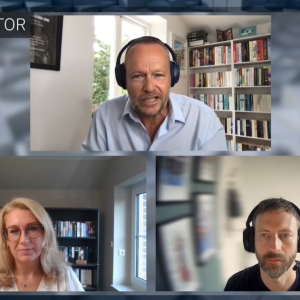September 28 saw a major conference on open systems, the International Symposium for Open Systems, Tokyo 90 held in Tokyo under the sponsorship of newly incorporated Sigma Systems Inc, the sucessor to the Sigma Project. Co-sponsored by the Information technology Promotion Agency, IPA, and supported by the Ministry of International Trade & Industry, the conference rated attendance from 500 industry people eager to hear speakers from the Open Software Foundation, Unix International Inc, Unix System Laboratories and X/Open Co Ltd as well as from Sigma Systems. The aim of the day, according to a representative from Sigma Systems was to inform the Japanese audience about the current state of Open Systems, and no doubt indirectly to promote Sigma Systems and what appeared to be a redefinition of its role in the industry.
For users
As the president of Sigma Systems Inc, Mr Takeshi Tsujioka said in opening the day, the goals of the Sigma project when it started in 1985 were precisely those espoused today for open systems, that is to develop a set of tools that could be used across a common development environment. The role of Sigma Systems, incorporated as a company only in April, is to further develop the products developed under the Sigma Project. A guest speaker from the Industry Ministry, Mr Tsutomo Makino, the Deputy Director General of the Machinery and Information Industries Bureau, the division that has guided the Japanese computer industry through its infancy and childhood, placed the current climate of computing for users in the context of the history of the development of the Japanese industry – computing for vendors – and its current problems, such as the shortage of development staff and pressure to move to regional areas. The main part of the day saw presentations from George Shaffner, chief marketing officer of X/Open Company, Thomas Bishop assistant vice-president of technology and planning from Unix International, and Joel Appelbaum, vice-president of open solutions software at Unix International, followed later by Chuck Reilly, vice-president, opera*tions of the Open Software Foundation and Dr Rob Morel, the managing director of Pacific operations of the Open Software Foundation. George Shaffner started with an analogy comparing Open Systems and disarmament one similarity which I find compelling he said is the amount of money being spent on Open systems – 100,000 billion yen in the next 10 years is his estimate. –
By Anita Byrnes
X/Open enjoys considerable support in Japan with the major vendors such as Fujitsu Ltd, Hitachi Ltd and NEC Corp being members of the X/Open board. George Shaffner attempted to outline some trends in the market the exponential growth of the open systems sales as a total of the whole (currently $70,000m against $500,000m); and spoke about the price paradox – the higher profit margins of proprietary systems for vendors versus the better value of open systems for users. X/Open sees the concept of interoperability as an accelerator to portability, and the alliances of user organisations that are appearing Petroleum Open Software Corp, the Houston 30 and so forth, indicating the start of a critical mass of buying power with a voice which will accelerate the development of products and markets, resulting in a shift of the price paradox. In the panel discussion after the presentations X/Open announced that Sigma Systems is to help expand X/Open’s XTRA user survey in Japan. Thomas Bishop of Unix International covered basically two themes – current activities of Unix International and the process of product definition and licensing at Unix International and AT&T. Mr Bishop was at pains to make the audience understand that Unix System V.4 had substantial Distributed Computing functionality which was available today, and he went through its components RPC, Remote Procedure Call, Network File System and Remote File Sharing, External Data Representation, XDR, and Network Information Service, Streams, Sockets, TCP/IP and application portability through X/Open’s Portability Guide re
lease 3. Joel Appelbaum also expanded on this theme of Open Distributed Computing and forsaw the appearance of object-oriented development tools such as C++, the growing importance of graphical user interfaces and the improvement of security functions.
Merger fear
Later Chuck Reilly and Dr Rob Morel gave positive, even aggressive presentations claiming that OSF/1 was the best operating system today, and Dr Morel in particular emphasised the idea of Unix running on top of the Mach-based OSF/1, thus providing Unix server functions. OSF/1 can unify the industry he said, by supporting Unix, OS/2 and MS-DOS, and making it much easier to run Unix on parallel processors such as the HyperCube. The Open Software Foundation is advocating this idea to Japanese vendors such as Fujitsu, Toshiba Corp, Oki Electric Industrial Co and NEC, asking them to do the work of converting their version of Unix to run atop the OSF/1 microkernel, citing the example of Hewlett-Packard Co, which converted HP-UX to Mach 2.5 without problem. The final panel discussion skirted around a lot of issues – questions from the audience indicated that some software vendors are still undecided about the benefits to them of open systems – especially the financial benefits. George Shaffer admitted that his greatest fear was that Unix International and the Open Software Foundation would merge, competition being the best spur for technological advancement. Sigma Systems director of Advanced Systems and Technology Division Yoshio Goto talked about redefining Sigma’s role in terms of assisting standards definition in Japan to move from localisation to internationalisation, and working with X/Open on this issue. In the future, Sigma would like to establish tests and provide tools similar to X/Open branding such that compliance with these tests would also mean X/Open compliance.






